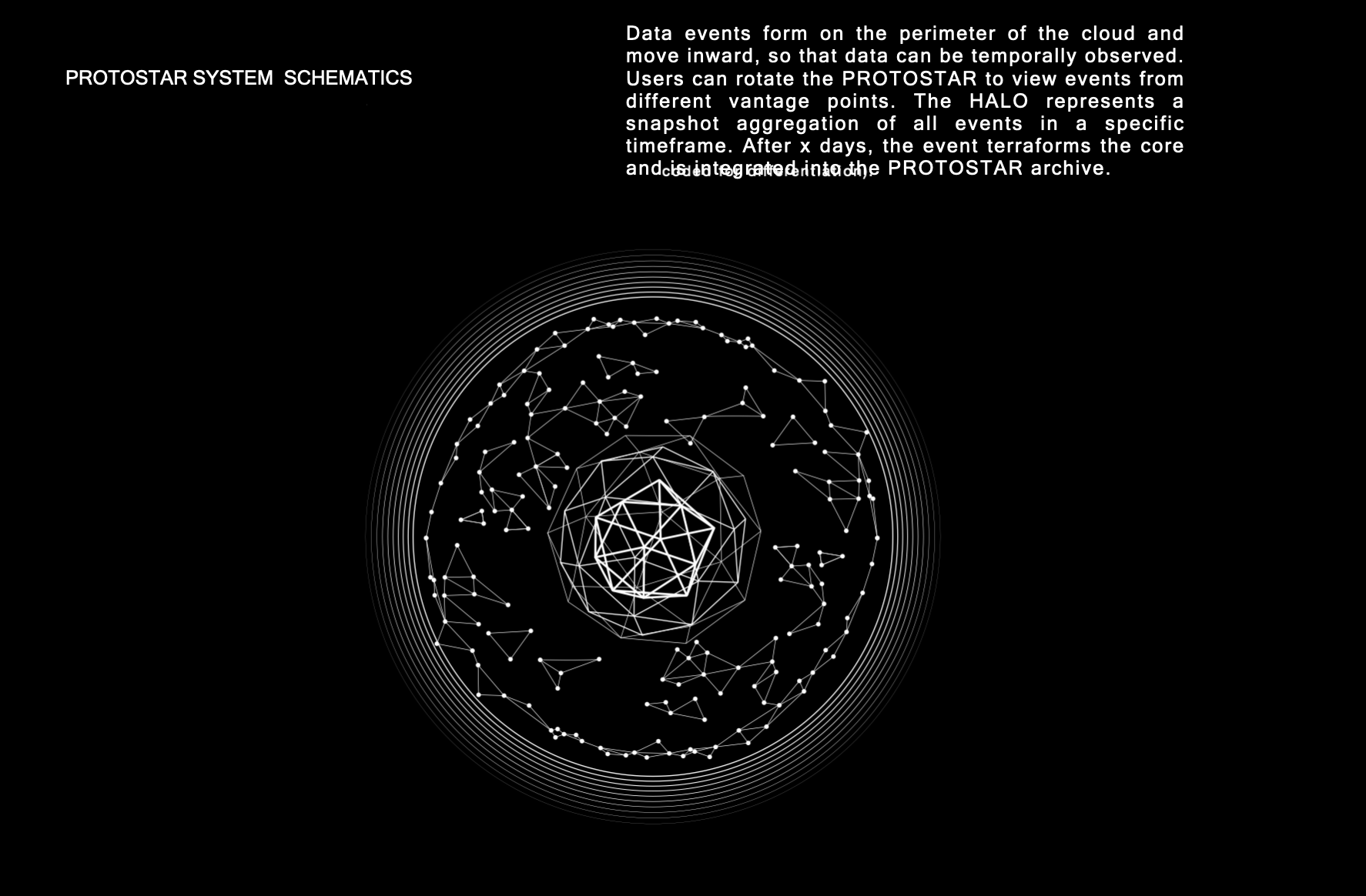A Next-Generation World-Building Technology for Data Visualization and Analysis
ORA is excited to announce we have filed a provisional patent for our generative world-building module, the Protostar System. What follows is the product brief and some slides from our patent application.
Overview
The Protostar System is a generative world-building technology that bio-mimics the way planets are generated in the cosmos. Agnostically, it presents as a three-dimensional data management, navigation, and visualization system that enables users to read and interact with data structured in time and space, offering a groundbreaking approach beyond traditional two-dimensional web pages. The system comprises four distinctive elements that together provide an interactive view of historical, contemporary, and external data, allowing users to understand complex patterns and trends in their ecosystems.
Key Components and Features
Central Core Archive: The core serves as a data archive, employing polyhedron structures to represent specific periods of time or data groupings. It organizes historical data within these structures, which can span months, years, or even decades, providing a comprehensive repository of past events and information.
Data Cloud: Contemporary events in the Protostar are represented as particles, each corresponding to a data point. Events are allocated to layers based on time. The closer an event is to the core, the further back in time it occurred. Event layers are further divided into regions, longitudinal and latitudinal facets which enable users to differentiate and understand context-specific data types . This feature enhances the user's ability to identify patterns and trends in specific areas of interest. Finally, events are further categorized with positive and negative ratings, or charge, visually differentiated through color-coding. This approach provides users with real-time insights into trends that influence the overall health rating of the ecosystem.
Data Halo: The HALO is a stand-alone module that represents an algorithmic-based dynamic light band. It visually aggregates and represents data layers, providing a snapshot of the planet's status at any given moment. Users can program the HALO to display specific data of their choosing, allowing them to focus on areas of interest or concern.
Flock: The Protostar system includes a representation of community or external data in the form of a flock which circumnavigate the protostar. The flock is a user interface that allows access to other Protostars within the network. Orbiting particles serve as direct access points to specific protostars. Visual signals, such as flight patterns, indicate cohesion or disunity in the flock and notify users of changes in the unity or coherence in their network. These also offer an at-a-glance insights into the collective performance of any given group.
Application
ORA has provided a provisional development license to HOAM, a collective that is designing a simulated parallel world to game out new social and economic systems. Their deployment of the Protostar uses this application language:
“The Protostar System is an agnostic world-building tool that allows communities and organizations to seed their theory of change as their world’s source code. As participants engage in actions and deliver outcomes that are aligned with the values of the new world, this data is captured and materialized into a visual representation of that lived experience. The more data that is captured by the Protostar, the more precise the tool becomes in its guidance of player actions toward the construction of their optimal world.”
Overall Utility
The Protostar System revolutionizes data visualization and analysis by offering a three-dimensional representation of data in time and space. By providing historical, contemporary, and external data representations, the system enables users to gain comprehensive insights into complex systemic events. This innovative system has the potential to transform research, decision-making processes and simulating projections of ecosystemic vectors.









